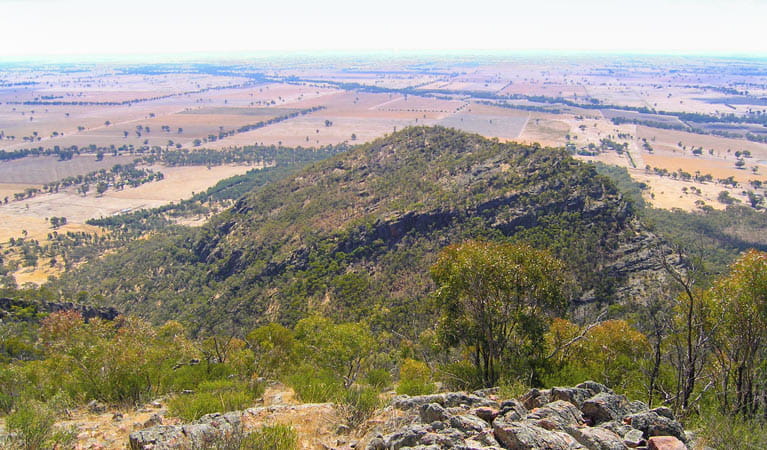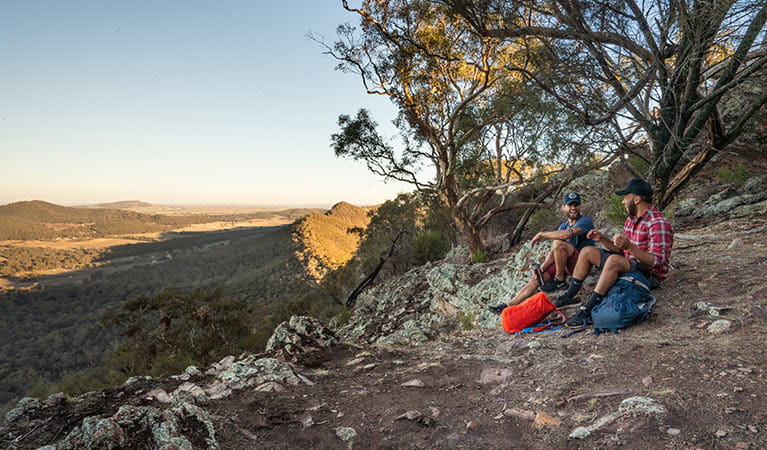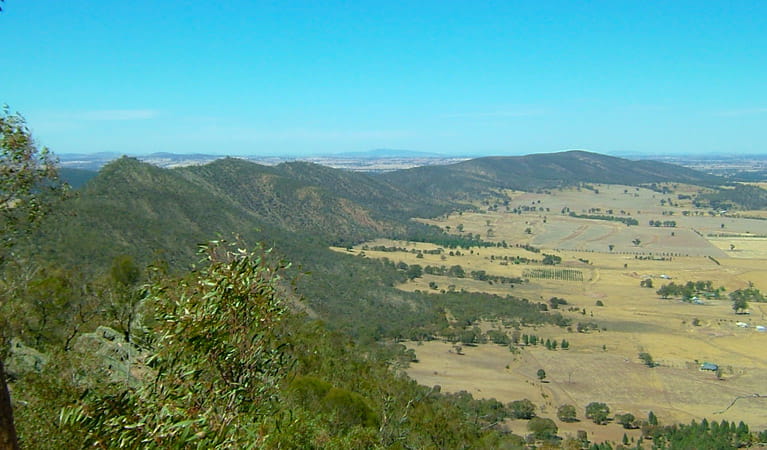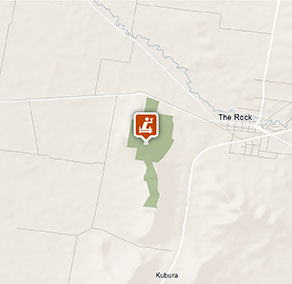The Rock lookout
The Rock Nature Reserve - Kengal Aboriginal Place
Overview
The Rock lookout is the terminus point of Yerong walking track, offering stellar scenic views over the surrounding area with great birdwatching opportunities.
- Type
- Lookouts
- What to
bring - Hat, drinking water, sunscreen
- Please note
- The weather in the area can be extreme and unpredictable, so please ensure you’re well-prepared for your visit.
- Remember to take your binoculars if you want to go birdwatching
The Rock lookout offers spectacular views, comprises the remains of an old trig point and is a rewarding way to end your hike along Yerong walking track. On a clear day you can see to Galore Hills in the west, and the snow-capped peak of Mount Kosciuszko far in the distance, as well as the Bogong Range and Victorian Alps.
The Rock lookout is a great place for birdwatching, as native peregrine falcons nest at and around The Towers. Artistically inclined travellers might like to bring a sketchbook, or perhaps a camera to capture scenery.
Keep your eyes peeled for wildflowers like bluebells and yellow wattle bloom. Near the bare cliff tops, Dwyer’s mallee gum and drooping sheoak have taken root. After admiring the view, head for The Rock picnic area down below and enjoy a leisurely, well earned lunch.
Subscribe to Naturescapes
Subscribe to our Naturescapes e-newsletter which is packed with the latest information, experiences and events in NSW national parks. Your next park adventure starts here.
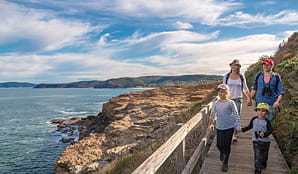
Saving Our Species program
Australia is home to more than 500,000 animal and plant species, many of which are found nowhere else in the world. Saving our Species is a statewide conservation program that addresses the growing number of Australian animals and Australian native plants facing extinction.

General enquiries
- National Parks Contact Centre
- 7am to 7pm daily
- 1300 072 757 (13000 PARKS) for the cost of a local call within Australia excluding mobiles
- parks.info@environment.nsw.gov.au
Operated by
- Tumut Region Visitor Centre
- 9am to 5pm daily. Closed Christmas Day.
- 02 6947 7025
- tumutrvc@environment.nsw.gov.au
- The Old Butter Factory, 5 Adelong Road, Tumut NSW 2720
Park info
- in The Rock Nature Reserve - Kengal Aboriginal Place in the Murray-Riverina region
The Rock Nature Reserve – Kengal Aboriginal Place is always open but may have to close at times due to poor weather or fire danger.
